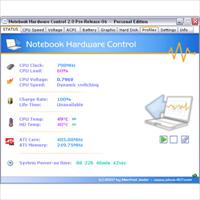Increasing Notebook Battery Power

Depending upon the model, a notebook battery usually lasts from 1 to 8 hours. However, with efficient battery usage, an hour or two of battery power can significantly be increased. You can save battery power by using the built-in battery saving modes and by following good notebook battery-saving practices.
Built-in battery-saving modes are Stand By and Hibernate. In the Stand By mode, open applications are stored in the RAM, the hard disks power down, the monitor switches off, but the processor goes on running. When you again perform some activity of the mouse or the keyboard, then the hard disk powers up, the monitor switches on, and the data from the RAM is activated, restoring your notebook exactly the way you left it.
The Hibernation mode is used when the notebook is left unattended for a long time. The open applications are stored on the hard disk, which subsequently powers down, the monitor turns off, and the processor turns off going in for hibernation. On soft rebooting like a restart or wake up on LAN, the processor turns on, the laptop wakes up, and the same exact settings are restored. Both these modes should be used to conserve battery power. You can preset your preferences in the settings of your notebook, so that in case you doze off, or leave the device for a coffee or a snack, the notebook automatically goes into any one of these power saving modes.
Following battery-saving practices can also save notebook battery power. You should always adjust the monitor controls to suit the room lighting conditions. Dimming the contrast and brightness saves battery power besides providing relief to your eyes. Auto-save and auto-update features of applications start in the background without your knowledge and these should be disabled. External devices consume a lot of battery power, hence the usage of external mice, monitors, keyboards, optical drives, videocam, digital cameras, or any other device connected to the PC Card slot, VGA/ FireWire/ USB port should be avoided.
Increase the RAM memory, if an extra slot is available, as this puts fewer burdens on the hard disk, which consumes a lot of battery power. Avoid multimedia games while you are running your notebook on battery power. Similarly, avoid music or movies. Copy the CD/DVD on the hard disk and play it from there, instead of the optical drive. Disable WiFi and Bluetooth. Built-in wireless cards should also be disabled. Decrease or set to mute the notebook speaker volume. Turn off all preprogrammed scheduled tasks. All unused open applications should be closed. The general guideline is that when your notebook is on battery power, you should perform only such operations, which are the need of the hour. Rest of the applications can be performed, when your notebook is connected to the mains.
Keeping good care of the battery also prolongs its life. To maximize performance of nickel-metal hydride batteries, they have to be completely drained off before they are recharged. However, lithium-ion batteries do not need cycling/conditioning, and they do not suffer from memory effects. Hence, they need not be fully drained off before recharging. When the notebook is not in use for an extended period, the battery pack should be removed to avoid battery leakage. Before removing the battery pack, you should charge it fully and then remove it, as all kinds of batteries should always be stored in a fully charged state. Do not store your battery pack along with metal parts, as this will short-circuit your battery.
Utilizing the built-in battery saving options and other means, you can significantly add one to three hours more in the total capacity of your notebook battery. Sometimes, in critical situations, like an important meeting, this extra hour of notebook battery power can help you clinch your desired deal.
This article can be accessed in portuguese from the Article section of page www.polomercantil.com.br/notebook.php
Roberto Sedycias works for www.PoloMercantil.com.br
 Back and Next - Back and Next
Back and Next - Back and Next See Also - See Also
See Also - See Also